Thingiverse

Thomson Problem Polyhedra by pmoews
by Thingiverse
Last crawled date: 3 years ago
J.J. Thomson (1904) asked: How do a small number of electrons arrange themselves on the surface of a unit sphere? Solutions have been proposed for cases where the number of electrons varies from 2 to 400 and beyond. However few solutions have been proved to be optimal.
Two types of polyhedra are useful for those working on the problem; the convex hull and its dual. A nice applet from Syracuse University shows virtual versions of these polyhedra.
(Run http://thomson.phy.syr.edu/thomsonapplet.php
Type n = 11 into the applet and press start - one can then alternate between the convex hull, "mesh", and its dual, "dual".)
It would be nice to print physical versions of these polyhedra and it was suggested to me that qhull - http://www.qhull.org/ - outputs these polyhedra in a simple format called OFF. I was able to write a program that coverts OFF format to openSCAD polyhedron commands.
Coordinates for possible solutions to the Thomson problem are available at The Cambridge Cluster Database http://www-wales.ch.cam.ac.uk/~wales/CCD/Thomson/table.html Solutions for n=10, 11, 13, and 14 were downloaded and converted to polyhedron commands.
Additionally an openSCAD program used to make Christmas ornaments, thing:14337, needed little modification to show the positions of the electrons as stars on the surface of a sphere. Spheres decorated with possible solutions for n = 10, 11, 13 and 14 were calculated.
The following STL files are provided:
Solution_Sphere_N11.stl
Convex_Hull_N11.stl
Convex_Hull_Dual_N11.stl
The image at the left shows printed versions of these files.
The stl files are in Thomson_polyhedra_stl.zip.
All the SCAD files and the FORTRAN program used to make the polyhedron commands are in Thomson_polyhedra_programs.zip.
Two types of polyhedra are useful for those working on the problem; the convex hull and its dual. A nice applet from Syracuse University shows virtual versions of these polyhedra.
(Run http://thomson.phy.syr.edu/thomsonapplet.php
Type n = 11 into the applet and press start - one can then alternate between the convex hull, "mesh", and its dual, "dual".)
It would be nice to print physical versions of these polyhedra and it was suggested to me that qhull - http://www.qhull.org/ - outputs these polyhedra in a simple format called OFF. I was able to write a program that coverts OFF format to openSCAD polyhedron commands.
Coordinates for possible solutions to the Thomson problem are available at The Cambridge Cluster Database http://www-wales.ch.cam.ac.uk/~wales/CCD/Thomson/table.html Solutions for n=10, 11, 13, and 14 were downloaded and converted to polyhedron commands.
Additionally an openSCAD program used to make Christmas ornaments, thing:14337, needed little modification to show the positions of the electrons as stars on the surface of a sphere. Spheres decorated with possible solutions for n = 10, 11, 13 and 14 were calculated.
The following STL files are provided:
Solution_Sphere_N11.stl
Convex_Hull_N11.stl
Convex_Hull_Dual_N11.stl
The image at the left shows printed versions of these files.
The stl files are in Thomson_polyhedra_stl.zip.
All the SCAD files and the FORTRAN program used to make the polyhedron commands are in Thomson_polyhedra_programs.zip.
Similar models
thingiverse
free

Duals of Polyhedra by pmoews
...he vertices of the cuboctahedron protrude through the centers of the faces of the rhomic dodecahedron in the compound polyhedron.
thingiverse
free

Thomson Problem Ornaments by pmoews
...onal faces, and 385 hexagonal faces. the single heptagonal face shares edges with 2 pentagonal faces.
openscad code is included.
thingiverse
free

Bowl and Lid with Pentagrams by pmoews
...nce of the bowl and are decorated with pentagrams; the lid shows a large "cinquefoil knot". openscad code is included.
thingiverse
free

Johnson Polyhedra Duals by pmoews
...enerated the duals are included in johnson_duals_scad.zip. the stl files of all the duals are included in johnson_duals_stl.zip
thingiverse
free

Hollow polyhedra: Catalan Solids by pmoews
...ut them is available on the internet; "catalan solids" entered in google usually results in more than one million hits.
thingiverse
free

Two Bowls and an Ornament by pmoews
... other attempts to make attractive bowls and can be used to transfer objects centered on the xy plane to the surface of a sphere.
thingiverse
free

Johnson Polyhedra by pmoews
...w structure. five examples of hollow polyhedra stl files are included here together with a sample openscad file, hollow_j03.scad.
thingiverse
free

Two Decorated Teacups by pmoews
...em - thing:393712 -; the second using one of hart's propello polyhedra - thing:1136184. details are in the openscad code.
thingiverse
free

Hollow Polyhedra: Prisms and Antiprisms by pmoews
...t site, "virtual polyhedra" by george hart has more information, seehttp://www.georgehart.com/virtual-polyhedra/vp.html
thingiverse
free

Box with 2 Lids by pmoews
...uot; from kit wallace's "knots to openscad" page - http://kitwallace.co.uk/3d/knot.xq - openscad code is included.
Thomson
turbosquid
$5

Thomson Gun
... available on turbo squid, the world's leading provider of digital 3d models for visualization, films, television, and games.
cg_studio
$21

Thomson M1A13d model
...odel
cgstudio
.c4d .3ds .dae .fbx .obj - thomson m1a1 3d model, royalty free license available, instant download after purchase.
3d_export
$25

Thomson Gun 3D Model
...thomson gun second world war allies nazi weapon rifle aim fire normandy d-day wwii
thomson gun 3d model antoni4040 77876 3dexport
turbosquid
$19

Thomson Machine gun
... available on turbo squid, the world's leading provider of digital 3d models for visualization, films, television, and games.
turbosquid
$15

Thomson Submachine Gun
... available on turbo squid, the world's leading provider of digital 3d models for visualization, films, television, and games.
3d_export
$15

Brandt Thomson MO-120-RT-61
...tated axis which makes it towable. the weapon fires 120mm nato standard mortar shells. it is currently produced by tda armaments.
3d_export
$19

Thompson Gun M1928 3D Model
...thompson gun m1928 3d model 3dexport thompson tompson wwii thomson tommy 45 colt handgun military firearm submashine mashine gun...
3d_export
$60

Gun set 3D Model
...lowpoly game nextgen mg34 mp40 walter browning colt garand thomson weapon pistol machine army war gun set 3d model...
3d_export
$19

Thompson Gun M1 3D Model
...thompson gun m1 3d model 3dexport thompson tomson thomson tommy m1 m1a1 ww2 wwii military firearm mashine submashine...
3d_export
$18

Aika thompson 3D Model
...aika thompson 3d model 3dexport aika thomson skies of arcadia character blender female girl teen teenager...
Polyhedra
thingiverse
free

Concave Polyhedra by kitwallace
... removed pyramid.
see my blog for details and polyhedra index. .http://kitwallace.tumblr.com/post/80458298236/concave-polyhedra
thingiverse
free

Toroidal Polyhedra by pmoews
...kew polyhedra with multiple holes. see the openscad code which includes references to the "visual polyhedra" web site.
thingiverse
free

Johnson Polyhedra by pmoews
...w structure. five examples of hollow polyhedra stl files are included here together with a sample openscad file, hollow_j03.scad.
thingiverse
free

Generated Polyhedra by kitwallace
...there are two versions of the dual stub hexpropellododecahedron - one small, the other large - must make the goldilocks version.
thingiverse
free

polyhedra star ( ninth stellation of icosahedron )
...polyhedra star ( ninth stellation of icosahedron )
thingiverse
a simple to make polyhedra star..
thingiverse
free

Convex Polyhedra ( @pdragy edited) by harnelbe
...convex polyhedra ( @pdragy edited) by harnelbe
thingiverse
made from
customizable convex polyhedra designed by @pdragy
thingiverse
free

Modulated Polyhedra by kitwallace
... from the website http://kitwallace.co.uk/3d/solid-index.xq
it needs to be customised for appearance and the modulating function.
thingiverse
free

Customizable Convex Polyhedra by pdragy
...tp://www.thingiverse.com/thing:16508), which have the face data from the vrml files converted to triangles to work with openscad.
thingiverse
free

Convex Polyhedra
...ttp://www.thingiverse.com/thing:233540
created with customizer! http://www.thingiverse.com/apps/customizer/run?thing_id=233540
thingiverse
free

Archimedean polyhedra by henryseg
...chimedean polyhedra by henryseg
thingiverse
these models are featured in figure 2.9 of visualizing mathematics with 3d printing.
Pmoews
thingiverse
free

Pheasant by pmoews
...pheasant by pmoews
thingiverse
123d catch version of a ceramic pheasant. the stl file is at 40% scale.
thingiverse
free

A Pelican by pmoews
...s
thingiverse
a neighbor's pelican model. it was digitized with autodesk's recap photo. the stl file is scaled at 40%.
thingiverse
free

Walrus by pmoews
...ews
thingiverse
a thrift store walrus, gray, weights over a kilogram, maybe a garden ornament. a 123d-catch copy at half scale.
thingiverse
free

Five Gourds by pmoews
...five gourds by pmoews
thingiverse
here are five gourds suitable for a fall display. they were digitized with 123d catch.
thingiverse
free

Vase with Lid by pmoews
...vase with lid by pmoews
thingiverse
a neighbor wanted a copy of a favorite vase. here are half size versions as stl files.
thingiverse
free

Pineapple by pmoews
.... fairly accurate - prints well without support. for other stl files based on real pineapples see things 4560, 7228 and 438266.
thingiverse
free

Ceramic Swan by pmoews
...ceramic swan by pmoews
thingiverse
a thrift store ceramic swan without markings. the 123-d catch file is at half scale.
thingiverse
free

Basset Hound by pmoews
...basset hound by pmoews
thingiverse
an autodesk recap photo copy of a basset hound bought at an estate sale. about 4/10 scale.
thingiverse
free

A Black Bear by pmoews
... by pmoews
thingiverse
a 123d catch version of a wood carving of a bear. a souvenir of new mexico. the stl file is full scale.
thingiverse
free

Model Fish - Trout by pmoews
...model fish - trout by pmoews
thingiverse
openscad "doddle". meant to be a rainbow trout.
Problem
3d_export
$5

padma awards
...you for downloading, contact me if you have any problem ...
3d_export
$7
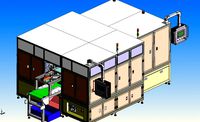
automatic test line
...is a large-scale test line. the loading and unloading problem is handled by the mechanical arm inside. the loading...
3d_export
$12
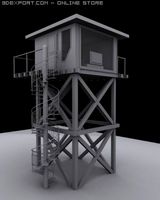
Tower 3D Model
...tower 3d model 3dexport tower hide stress problem window stairs tower 3d model zzzsotti 2460...
3d_export
free
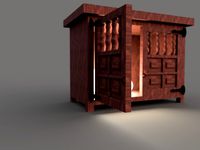
small table
...this is a rustic table for decorating 3d designs.<br>any problem with the design contact me...
3d_export
free

sarcophagus
...in the zbrash. please contact me if you have problem with the model, i am a novice...
3d_export
$5

princess cut ring
...ring ready to print ! if you feel any problem so contact me...
3d_export
$20
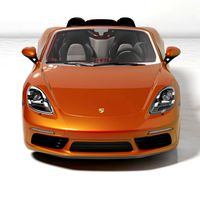
Porsche Boxster S Lava Orange
...used materials from corona library ! if you have problem with model email...
3ddd
$1
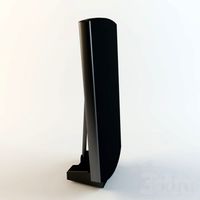
Speaker - QUAD ESL 2905
...- quad esl 2905 3ddd колонки sorry for previous problem with studio lighting. i hope this time everything is...
3d_export
$10

Pad for the castle Philips 5100
...door is recessed deeply , this is not a problem , because you can always use a transition platform...
3d_export
$5
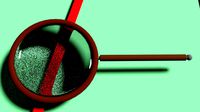
magnifying glass
...3dexport simple magnifying glass design with basic textures<br>i had problem rendering, but the file is in perfect...
